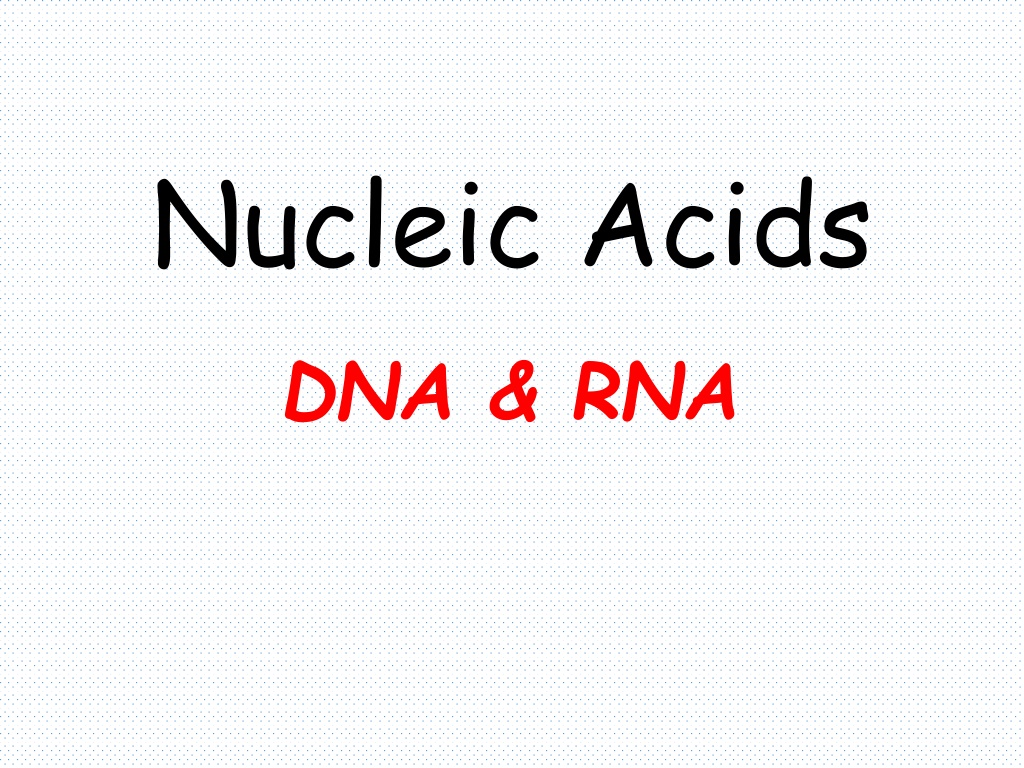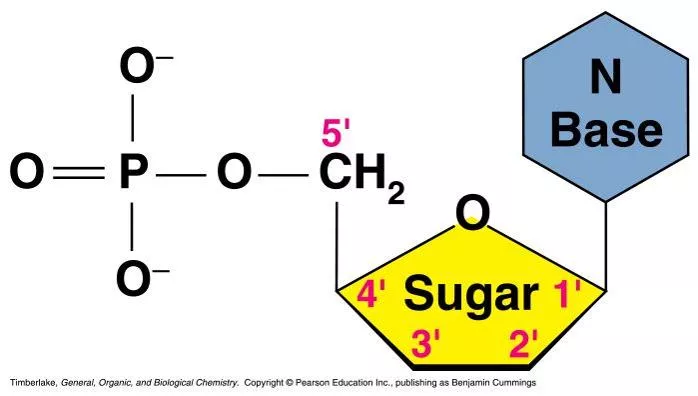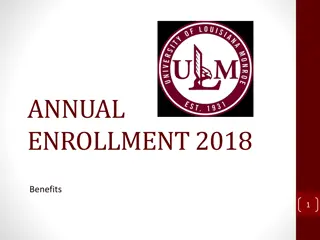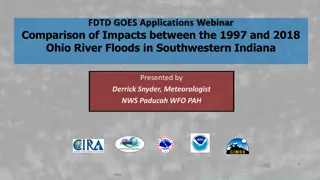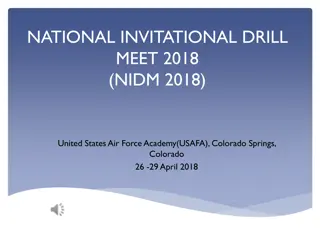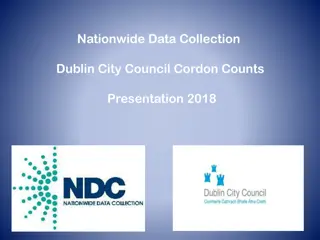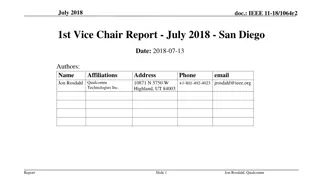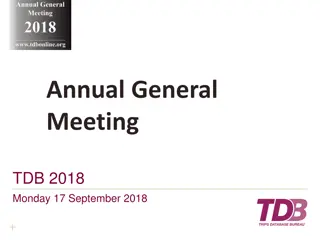Nucleic Acids: DNA and RNA Overview
Nucleic acids, including DNA and RNA, are essential molecules storing genetic information for cellular functions. Comprised of nucleotides with nitrogenous bases, sugars, and phosphate groups, they play crucial roles in intracellular signaling, energy transfer, and genetic makeup determination. Ribonucleotides with a 2'-OH and deoxyribonucleotides with a 2'-H differ in their chemical structures, reflecting the distinction between RNA with ribose and DNA with deoxyribose sugars. Nucleotides serve as the building blocks for DNA and RNA, with base pairs dictating genetic sequences. Techniques like Sanger dideoxy sequencing aid in DNA strand sequencing by halting further synthesis.
Download Presentation

Please find below an Image/Link to download the presentation.
The content on the website is provided AS IS for your information and personal use only. It may not be sold, licensed, or shared on other websites without obtaining consent from the author.If you encounter any issues during the download, it is possible that the publisher has removed the file from their server.
You are allowed to download the files provided on this website for personal or commercial use, subject to the condition that they are used lawfully. All files are the property of their respective owners.
The content on the website is provided AS IS for your information and personal use only. It may not be sold, licensed, or shared on other websites without obtaining consent from the author.
E N D
Presentation Transcript
Nucleic Acids DNA & RNA
Nucleic Acids Nucleic acids are molecules that store information for cellular growth and reproduction There are two types of nucleic acids: - deoxyribonucleic acid (DNA) and ribonucleic acid (RNA) These are polymers consisting of long chains of monomers called nucleotides A nucleotide consists of a nitrogenous base, a pentose sugar and a phosphate group:
Nucleic Acids DNA and RNA are nucleic acids, long, thread-like polymers made up of a linear array of monomers called nucleotides All nucleotides contain three components: 1. A nitrogen heterocyclic base 2. A pentose sugar 3. A phosphate residue
Chemical Structure of DNA vs RNA Chemical Structure of DNA vs RNA Ribonucleotides have a 2 -OH Deoxyribonucleotides have a 2 -H
Pentose Sugars There are two related pentose sugars: - RNA contains ribose - DNA contains deoxyribose The sugars have their carbon atoms numbered with primes to distinguish them from the nitrogen bases
Nucleotide Function Building blocks for DNA and RNA Intracellular source of energy - Adenosine triphosphate (ATP) Second messengers - Involved in intracellular signaling (e.g. cyclic adenosine monophosphate [cAMP]) Intracellular signaling switches (e.g. G-proteins)
It is the order of these base pairs that determines genetic makeup One phosphate + one sugar + one base = one nucleotide Nucleotides are the building blocks of DNA thus, each strand of DNA is a string of nucleotides
Sanger dideoxy sequencing incorporates dideoxy nucleotides, preventing further synthesis of the DNA strand
basepurinepyrimdine+ribosedeoxyribos N-glycosyl linkage nucleoside+phosphate phosphoester linkage nucleotide phosphodiester linkage nucleic acid
Nucleotide Structure - 1 Sugars OH HOCH2 O Generic Ribose Structure Ribose 5 HOCH2 O OH OH 4 1 3 2 OH HOCH2 O N.B. Carbons are given numberings as a prime Deoxyribose OH H
Purine and Pyrimidine Pyrimidine contains two pyridine-like nitrogens in a six- membered aromatic ring Purine has 4 N s in a fused-ring structure. Three are basic like pyridine-like and one is like that in pyrrole
Nucleotide Structure - 2 Bases - Purines NH2 N Adenine N A N H N N 7 N 6 5 1 8 O 2 4 9 3 N N N N H G Guanine N H N NH2
Nucleotide Structure - 3 Bases - Pyrimidines O H3C Thymine NH T N H O N 4 3 5 NH2 6 2 1 N N C Cytosine N H O
Nitrogen Bases The nitrogen bases in nucleotides consist of two general types: - purines: adenine (A) and guanine (G) - pyrimidines: cytosine (C), thymine (T) and Uracil (U)
Nucleotide Structure - 4 Bases - Pyrimidines Thymine is found ONLY in DNA. In RNA, thymine is replaced by uracil Uracil and Thymine are structurally similar Uracil O N 4 NH 3 5 U 6 2 1 N N H O
Nucleotide Structure - 4 Base-Sugar-PO42- 4 N 3 5 6 2 O 1 N 5 C O P O O O 4 1 3 2 OH Monophosphate
Nucleotide Structure - 4 Phosphate Groups Phosphate groups are what makes a nucleoside a nucleotide Phosphate groups are essential for nucleotide polymerization Basic structure: O O P O X O
Nucleotide Structure - 4 Phosphate Groups Number of phosphate groups determines nomenclature Monophosphate e.g. AMP O O P O CH2 Free = inorganic phosphate (Pi) O O O Diphosphate e.g. ADP CH2 O P O P O Free = Pyro- phosphate (PPi) O O
Nucleotide Structure - 4 Phosphate Groups Triphosphate e.g. ATP O O O CH2 O P O P O P O No Free form exists O O O
Nucleosides and Nucleotides A nucleoside consists of a nitrogen base linked by a glycosidic bond to C1 of a ribose or deoxyribose Nucleosides are named by changing the the nitrogen base ending to -osine for purines and idine for pyrimidines A nucleotide is a nucleoside that forms a phosphate ester with the C5 OH group of ribose or deoxyribose Nucleotides are named using the name of the nucleoside followed by 5 -monophosphate
AMP, ADP and ATP Additional phosphate groups can be added to the nucleoside 5 - monophosphates to form diphosphates and triphosphates ATP is the major energy source for cellular activity
